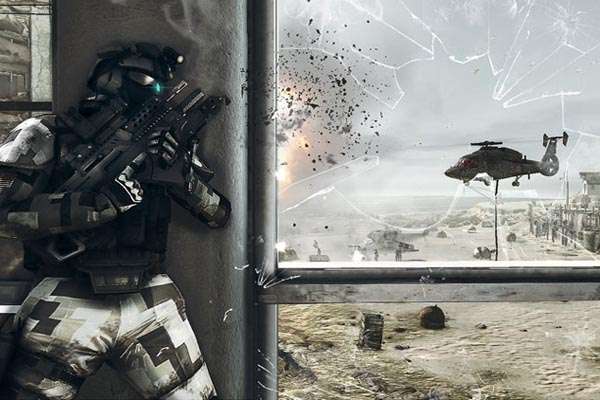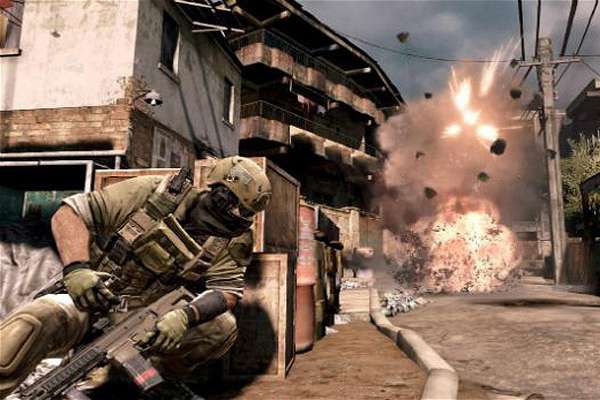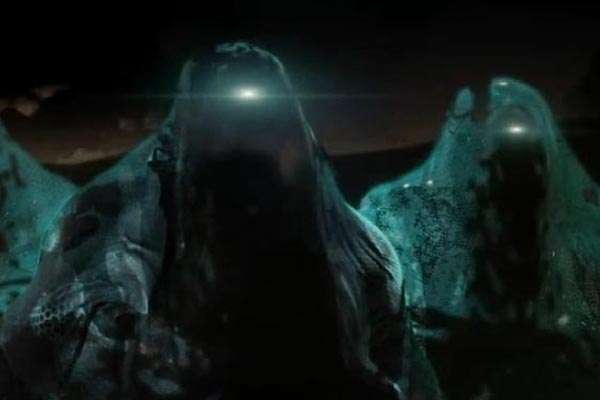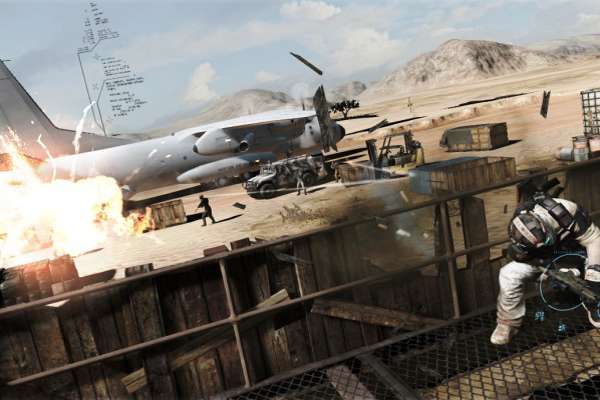
Ghost Recon: Future Soldier Xbox 360 Review
All the world’s a stage,
And all the men and women are merely players:
They have their exits and entrances;
And one man in his time plays many parts.
Ne’er so apt has a quote from Shakespeare been applied to a gaming experience based on the silent, efficient and always brutal methods of dispatching a foe. I can almost picture Tom Clancy in between bouts of licensing off his name for various merchandising endeavours, picking up his Shakespeare compendium and flicking through the pages, only stopping at these particular lines from As You Like It (for those curious to know its origin). This passage sticks in his mind, but not in the traditional theatrical sense. In Ghost Recon Future Soldier (to be referred to as Future Soldier for the entirety of this review), the levels you inhabit are a stage, and you are merely a ‘player’ in the grander sense of the word.
Your entrance is Nicaragua and with the assistance of your other players – now referred to as your squad – have attacked a convoy which is carrying some suspicious cargo. The cargo in question turns out to be a ‘Dirty Bomb,’ which – spoiler alert! – wipes out your entire squad. You’re then given control of another Ghost unit as a character named Kozak, who must find the source of the dirty bomb while traveling to various locations like Bolivia, Nigeria, and Norway. Writing of the opening scene so matter of factly removes the drama from the situation, but it’s best seen first hand. The opening five minutes to Future Soldier are harrowing and brutal, but very, very well done. As far as opening set pieces in war games go, Future Soldier’s opening will stay with me for a long time.

Since the last Ghost Recon games, the Advanced Warfighter (GRAW) mini-series, much has changed for the Ghost Recon label. Future Soldier, much like the latest Splinter Cell, was in development for a very long time, and some elements have been extrapolated and carefully implemented into Future Soldier to great effect (more on this later). Yet at the same time, the series has undoubtedly moved away from its original tactical simulation history. In gamers’ eyes, war has changed, and for Future Soldier to be a success in this new mindset, it too must make changes. However, unlike most of the war game ‘pretenders’ out there, Future Soldier has a healthy confidence in its final delivery and reeks of a development team that has enjoyed making a game without being forced to pack it with nonsensical content. plot, or lavish cut-scenes in order to justify a yearly release – rest assured, this is good.
Visually, Future Soldier exists in a state of confusion, veering between looking absolutely fantastic and lavished with care to moments when it seems rushed or poorly compressed with visible artifacting on the screen. These negative moments are a shame as they degrade what is mostly a stunning looking game on hardware we all know isn’t getting any younger. The first proper level set in Bolivia looks great, with the shantytowns possessing an air of the favelas in Modern Warfare 2 replete with panicked population running for cover. The varying locales each ooze character and fit into the proceedings magnificently. The water reflections look great, as do the explosions with smoke clouds looking like something ripped straight out of Sky News on war coverage.

My main gripe with the game’s visuals has to be the facial features of all the people you come across. Their mouths don’t even attempt to sync with dialogue and generally lack the attention that’s given in series like COD. However, faces aside, the detail on your Ghosts is quite simply stunning as they’ve been motion captured from the movements of a real life Navy Seal who assisted in every facet of the game from mission structure and weaponry to employed tactics. Authenticity is key here, and the efforts to implement that authenticity into the game wonderfully fleshes out the experience. The game moves at a fair lick to rarely ever dropping frames and has been confirmed to run at a capped-30fps, although there was – at least in my experience – a fair amount of slow-down on the Deep Fire level; however, this should be attributed to aging hardware rather than poor optimisation. As for audio, it expectedly sounds fantastic. Red Storm spent a huge amount of time recording the audio for every single weapon in the game and it shows. In 5.1 surround sound, this game sings a most harmonious tune of destruction and disaster with aplomb.
If you have played any of the previous Ghost Recon games (namely GRAW), the controls will be second-nature to you. As I mentioned earlier, DNA from SC:Conviction has made it’s way into Future Soldier in the form of highly effective room-clearing takedowns knows as Sync Shots. When activated, Sync Shots allow you to create wonderfully planned takedowns of enemies that are a joy to behold. The simplistic set-up allows you to choreograph and wipeout an entire area of foes with an almost poetic and beautiful execution. Similarly, Red Storm has really nailed the shooting aspect of this game; as a fan of the previous Ghost Recon games, I only ever had one gripe with them – hit detection. This time around, hit-detection has been given a much appreciated fine-tuning. My bullets look like they’re hitting home; for example, I shot an enemy soldier in the neck whilst hiding behind cover only to watch his head loll and his body collapse underneath him – I felt a (brief) moment of guilt.

The AI in Future Soldier is not human player centric, meaning it works on a threat-basis as well as an objective basis, shown by how it detects, responds and nullifies situations. There were many points in the game where I had been downed due to my own negligence, but my squad’s AI responded accordingly and revived me. However, you have to be careful when you ask AI teammates to open fire and help as they’ll consequently take more risks, leaving them exposed and in greater danger of being shot. Be aware though – you can only go down once and be healed. If you’re put down again, it’s back the last checkpoint for you. Thankfully, most checkpoints are well-placed and don’t require too much arduous work to retread lost ground.
Being a game set in the near-future, Future Soldier is jam-packed with a variety of gadgets to aid you. One of the first you acquire is the Drone, a little hovering UAV which has the ability to tag enemies and also emit a Sonic Pulse which disables electronic equipment and temporarily stuns enemies. Controlling drone in its two forms (flying and as a remote control car) is simple and effective considering its use. It’s particularly useful in online multiplayer to oversee what’s happening and report back to your team; I guarantee that when you see the little device hovering above your head, your heart will no doubt stop for a second. The other futuristic aspects that impact your play are featured in the game’s cross-com HUD, which is used to ‘spot’ enemies for the Sync Shot, to scan the field for any other threats, and to great effect when against foes who have the same abilities, opening up the possibility of increased tactical use in a multplayer arena.

There’s also one new feature that truly makes you a ghost – the cloak. When you see the cloak in action, you could be forgiven for thinking it renders the user invisible. What it actually does is merely deter vision when you crouch or stand against a wall, and deactivate when you’re under direct fire. The best aspect about all of the gadgets is that none of them feel forced because once you use them for the initial introductory tutorial, you’re pretty much free to use them in mission as much or as little as you like. Furthermore, you’ll notice the implementation of all of the devices thoughtfully aids your progress, tempting you to rely on them far more than you should.
Multiplayer is where the majority of people will truly enjoy the game, echoing the tradtional Ghost Recon community who cried out when the game switched from first-person to a third-person perspective. Taking control of either the Ghosts (NATO weapon equipped special ops forces) or the Bodark (Russia’s own Ghost special ops forces), you’re pitted against each other in up to 6v6 through various game modes. The game comes with five playable modes online – Conflict, Saboteur, Siege, Decoy and Guerilla. All game modes are best out of three, except for the one-round based Conflict and Guerilla, which can last up to 50 rounds. Conflict is a normal objective based team-deathmatch, Saboteur focuses on threat diffusal (collect a bomb, and explode it in a base), and Siege allows one teams to attack whilst the other defending team tries to protect two bomb sites. The two other games modes slightly differ – in Decoy, the defending team defends three sites, but the twist is that only one site is the actual objective. Neither team knows which site is the true objective until it’s discovered, when a final achievable objective becomes available. Finally, there’s Guerilla, which is your Ghost Recon “horde” mode. You have a squad of four pitted against waves of enemies and enemy vehicles. Success in these modes unlocks support actions, UAV’s, Airstrikes, and other bonuses. The crux of this mode, however, is that every ten rounds a new location is marked on the map from where you must repel the attacks. It’s a fresh look at some old ground, and it’s interesting and a blast to play.

The levelling up aspect of the game also presents some new ideas. New equipment and weaponry is unlocked as you progress through levels, and level milestones allow the player to choose between two rewards. For example, an Engineer could choose to unlock either a movement sensor or a drone; however, this choice must be made carefully as once you make it, you cannot (change) the character as he progresses further up the ranks. You can also earn other items known as “Gunsmith” tokens to upgrade or modify your weapons with each spent token locked specifically to that area of the updated weapon. For example, if you choose to unlock the red-dot sight for the FAL, the red-dot sight is only unlocked for the FAL and not any other Ghost weapon. However, there is a way eventually to “respec” (sic). Once you reach level 50, you gain a token that allows you to respec the character by unlocking an extra class slot where you can use, for example, one Bodark weapon for a Ghost weapon. This all sounds rather complicated, but think of it this way – as you go up a level, you have to decide what skill path to take. It may initially sound annoying, but forcing a path ensures you put thought into your playing method. Some won’t like it, but I liked the coercion and it didn’t detract from the gameplay at all.
One of the newer features is the inclusion of Kinect (and Move) support in the much talked about Gunsmith mode. Utilising the movement capabilities of Kinect, you’re able to adjust, edit and manipulate weaponry to your heart’s content whilst even getting the opportunity to test out your weaponry on the rifle-range. It works well, but it’s not really too much of a vital addition, merely a neat side-element to what is already an impressive title. Personally, I’m looking forward to the iOS app that will allow me to edit and save my gun loadouts with Gunsmith via Ubisoft’s upcoming Ghost Recon Network.

The campaign of the game will last between 10-12 hours, with the added replayability of the campaign encouraging you to come back. Referring back to Shakespeare, all the world is indeed a stage, as each level is a scene to be approached from various directions alone or as part of a team. How you perform and the resulting (Ghost) score at the end of the mission will have you coming back to try and fully beat the objectives and attack scenarios from different angles. That freedom works well and shows it has confidence to proceed on its own footing without decending into the cliché shooter syndrome of nearly all other shooters. Luckily, Future Soldier only momentarily descends in the final third of the game when it turns into a routine run-and-gun shooter. It’s a shame too because, at it’s best, it intelligently showcases how to deliver a gaming and camaraderie mechanic that the CODs, Battlefields and Army of Two have struggled to emulate. Sure, you have the aviator wearing AK47 toting war-criminal from every bad action-movie and game over the last 5-10 years, but it manages to deliver that guy in a world that you’ll want to return to and with gameplay that makes it as much fun and tense on your own as with friends.
So it’s not COD, but whether it carves out its own niche is another matter entirely. Future Soldier emanates the soul of a game that has been lovingly crafted by a team that are devoted to pleasing its long-running community, allaying fears over too much dumbing down of the series to please the COD crowd. However, Red Storm has had to make concessions – like reducing co-op to 4 players from the original 16 – that seem odd, but do I think they work? Yes, for the most part. It doesn’t need to pander to the clichés of the ‘other’ shooters out there, but that’s something the team will learn and hopefully be able to build upon going forward. They took their time, but the ghosts are back – boy, are they back. You just won’t be able to see them until it’s too late.
